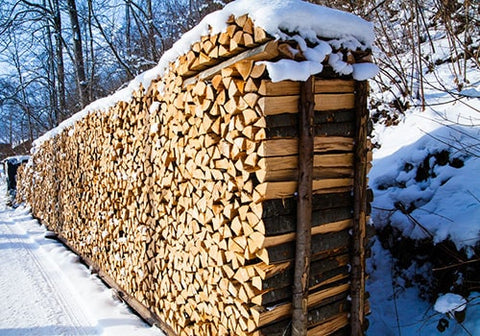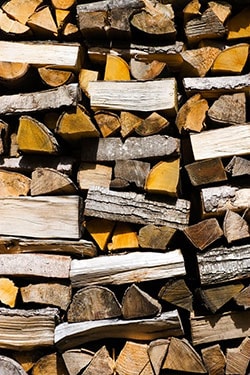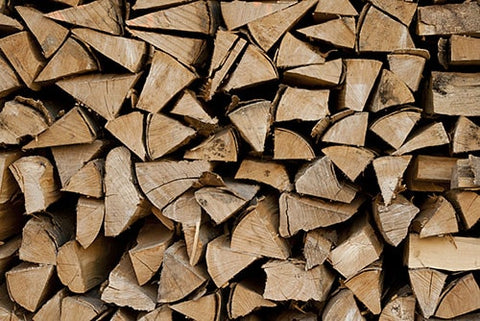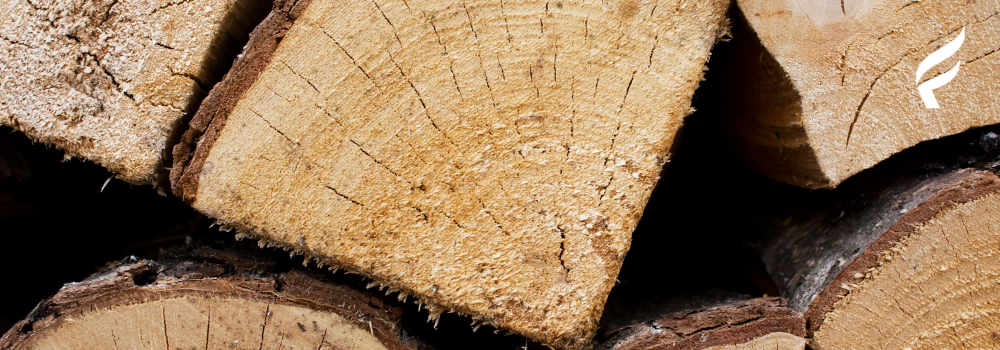There’s a nip in the air, the leaves are turning and autumn has officially arrived. Soon you’ll be stoking up the Quadra-Fire or Vermont Castings wood stove and enjoying the kind of home comfort and cozy heat only burning wood provides. We’re sharing time-honored tips and tricks for seasoning and storing your cordwood this fall.
Whether you buy wood from a supplier or harvest it yourself, how you stack it is just as important as the quality of the wood. By piling it correctly and letting it sit for at least six months, the wood will become seasoned, meaning it’s no longer green, is free of sap and dry. Stacking it correctly is all about keeping it off the ground and providing airflow.
Keep it off the Ground
When it comes to seasoning firewood, mold and rot are your enemies. To prevent them, elevate your wood pile by building it on a structure that keeps the bottom row from touching the ground. Many people build wooden racks to hold the wood. Another idea is to use concrete blocks or wood pallets on the ground as a base. You can get creative with this technique, as the idea is simple – just keep the wood off the ground. Important side note: it’s best to build your wood pile in a sunny area vs. a shady spot. The sun’s warmth will contribute greatly to drying and seasoning the wood.

Provide Airflow
When stacking cordwood, build in as much exposure to air as possible. A popular method is building towers of cordwood, stacking pieces of split wood perpendicular to each other. When building multiple towers in a line, you’ll need vertical supports on each end to hold them in place. Existing trees will work if they’re located close together, or you can bury a couple T-posts or wooden fence posts.

Another method is simply stacking the pieces in rows and creating airflow by strategically placing each log. This is actually easier than it sounds, as every piece of wood has a unique shape once it’s split. For this stacking style, you’ll also need supports on each end to keep the pile from falling.

Whatever stacking method you use, air pockets can be created by strategically placing odd-shaped logs within the stack. Wood is naturally cooperative when it comes to irregularities.
Once constructed, some people choose to cover their wood piles, and some argue against it. Covering your pile with a material like black plastic can protect against rain and snow, but it can also prevent air from reaching the wood. If you choose to cover your wood pile, most experts recommend using vertical supports to create air space between the cover and the top row of wood, and perhaps removing the tarp during peak drying summer months.
By following these general guidelines and using a little technique when stacking cordwood, you’ll get the most bang for your buck (or sweat equity) out of your woodpile. There’s a science to selecting firewood too - these are The Best Wood Species for Better Fires.






